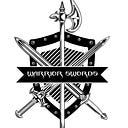Unveiling the Legacy: The Evolution of Irish Swords
Irish swords hold a unique place in European history. Their distinctive design, a testament to centuries of evolution and adaptation, set them apart from other blades. This blog post delves into the fascinating world of Irish swords, exploring their history, usage, and characteristics.
Types of Irish Swords
Irish swordsmiths crafted a variety of blades, each suited for different combat scenarios. Here are some prominent types:
- Ring-Pommel Swords: Easily recognizable by their open ring at the hilt’s end, these swords were highly effective against chainmail, prevalent in Ireland long after its decline elsewhere. The ring-pommel not only offered a distinct look but also improved handling through better balance.
- Gaelic Longswords: Reigning supreme from the late Middle Ages to the early modern era, these two-handed swords prioritized power. Featuring long, straight, double-edged blades, they excelled at both thrusting and slashing. Their utilitarian hilts provided a firm grip for wielding these formidable weapons in open combat.
- Claymore-Style Swords: Though often associated with Scotland, large swords akin to the claymore found a home in Ireland as well. These blades shared the claymore’s signature broad blade and cross-shaped hilt, but with a distinct Irish touch. They were heavier and larger than standard swords, offering versatility in thrusting and slashing attacks.
- Viking-Inspired Swords: The Viking influence on Ireland extended to sword design. These shorter, robust swords emphasized practicality and durability. Their simple hilts and guards prioritized swift, powerful strikes in close-quarter combat, enriching Irish swordmaking with new techniques and styles.
Characteristics of Irish Swords
While Irish swords encompassed various types throughout history, the iconic image often conjures the 16th-century ring-pommel sword. Let’s delve into their specific features:
- Metal and Construction: Irish sword blades were likely imported from continental Europe, similar to German swords of the era. Some blades even sported the “cross pommée” mark, possibly a German imitation of an Italian design. Surviving examples showcase high-quality steel for both the blade and the intricately crafted crossguard and pommel. The hilts, however, were crafted in Ireland to fit these imported blades. Modern replicas often use high carbon steel, with damascus steel being uncommon. Decorative swords may utilize stainless steel blades.
- Blade Appearance: Irish swords typically featured long, slender, double-edged blades, often incorporating a ricasso, a blunt upper section above the guard. Fullers (grooves) were either absent or narrow on some blades. Historical examples sometimes included a heraldic cross pommée inlaid on one side of the blade.
- Size and Length: Extant swords often measure over 100 centimeters (39 inches) in total length, with blades reaching around 90 centimeters (35 inches). The blades themselves were slender, ranging from 2.8 to 3.6 centimeters wide, with a ricasso measuring 5.6 to 9.2 centimeters. The lightweight hilts contrasted with the heavier blades, shifting the balance point towards the blade for optimized slashing attacks.
- Sword Mounting: Irish swords typically featured single-handed grips, originally clad with wood and potentially bound with wire. An elongated S-shaped crossguard was a common feature, with quillons (the guard’s arms) curving outwards and terminating in fan-shaped or triangular shapes. Some quillons even boasted openwork crosses near their ends. Two langets, extending down the blade from the crossguard, provided additional support.
Irish Swords vs. Scottish Claymores
Irish swords and Scottish claymores, prominent weapons of the medieval and Renaissance periods, share similarities as slashing swords. However, key distinctions set them apart:
- Weight and Maneuverability: Irish swords prioritize agility and swift strikes due to their lighter weight and slender build. Conversely, Scottish claymores are heavier and larger, designed to deliver powerful swings.
- Crossguard Design: The elongated S-shaped crossguard of Irish swords contrasts with the claymore’s distinctive large quillons, offering superior hand protection.
These variations in weight, blade size, and crossguard design reflect the unique combat styles and cultural influences that shaped European swordcraft traditions.
Evolution of Irish Swords Through History
Understanding the evolution of Irish swords requires us to delve into different historical periods:
- Early Swords (400–800 AD): Limited historical records and archaeological finds make it challenging to reconstruct the specifics of early Irish swords. Evidence suggests the presence of single-edged swords influenced by Germanic designs and double-edged swords potentially linked to Roman styles.
- The Arrival of the Anglo-Normans (12th Century): The Anglo-Norman invasion introduced knightly swords with
